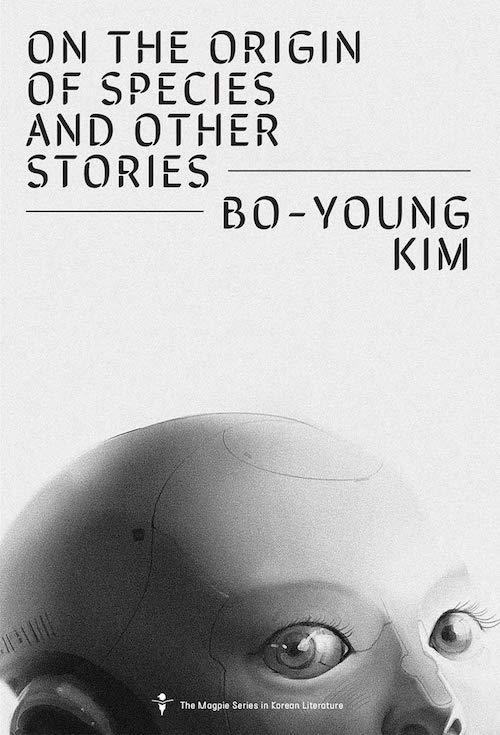
“Speculative fiction” is in some quarters used as little more than a euphemistic label for science fiction, by readers hoping to preempt association with a stigmatized genre. But interpreted literally, the term covers a vast imaginative field encompassing horror stories, fantasy sagas, alternate history, and much else besides. Many writers specialize in one or two such subcategories of speculative fiction; few if any could be said to write speculative fiction itself, with the width of narrative and intellectual range that would demand. But if any current writer of my acquaintance does approach that ideal, it’s Kim Bo-young, whose collection I’m Waiting for You and Other Stories I covered last time here on the Korea Blog. That book, published in April by HarperVoyager, was her very first in English translation. And just last month Los Angeles’ Kaya Press put out another, On the Origin of Species and Other Stories.
“If we see a person in the distance and they seem to have breasts, we hastily assume that they must be a woman,” writes Kim in her introduction to the new collection. “Science seems to occupy a similar position in SF.” Though breasts may not in themselves make someone a woman, Kim — a woman — notes that her own body “came equipped with a set. I didn’t, for example, decide one day to install a pair myself. Similarly, many of the stories I’ve written came into being without me consciously trying to turn them into SF.” Still, they’ve been received and even acclaimed as such, though some of them include nothing that the casual reader of the genre would call science — or in any case, not the kind of science that manifests in pieces of advanced future technology like the spaceships flown in I’m Waiting for You.
The variety of science most consistently underlying On the Origin of Species is, unsurprisingly, biology, and evolutionary biology in particular. Several of its stories feature a humankind evolved, devolved, or obliterated only to evolve all over again. In “An Evolution Myth,” a fifteenth-century Korean crown prince undergoes a dramatic biological transformation by himself: as he flees the kingdom when a hostile cousin ascends to the throne, a process kicks in that aids his survival in isolated exile by granting him various animalistic features. Eventually the prince becomes a kind of all-powerful dragon, a type of creature that dominates the devastated future Seoul of the following tale, “Last of the Wolves.” Human beings still exist there, though they’ve taken on lupine characteristics and mostly been domesticated by dragon masters; the few who remain untamed squat in the “ancestral ruins” of Dongdaemun Station and forage for soybeans in the overgrown Gwanghwamun Square.
Read the whole thing at the Los Angeles Review of Books.